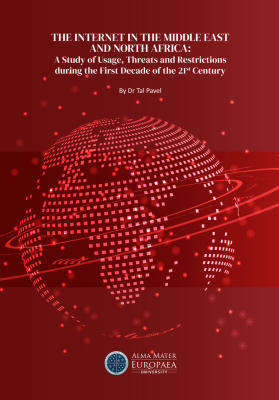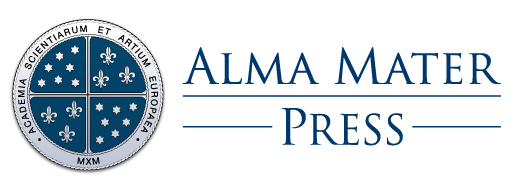The Internet in the Middle East and North Africa: A Study of Usage, Threats and Restrictions during the First Decade of the 21st Century
Synopsis
Scholarly book by Dr Tal Pavel comprehensively explores the Internet’s multifaceted role in the Middle East and North Africa (MENA) region, situating technological developments within the broader historical, political, and cultural context. It demonstrates how the rapid diffusion of digital technologies at the turn of the 21ˢᵗ century introduced new opportunities for education, commerce, and civic participation, while simultaneously posing significant challenges to traditional governance structures.
The Internet in MENA was initially perceived as a symbol of openness and progress, offering unprecedented access to information, global connectivity, and platforms for dialogue that transcended borders. Civil society, human rights advocates, and activists quickly adopted digital tools to amplify marginalised voices, challenge entrenched power relations, and mobilise for social change. In doing so, the Internet emerged as a technological innovation and a transformative medium, reshaping public discourse across the region.
Structural inequalities, including uneven infrastructure development and limited digital literacy, created significant disparities in access. The scarcity of Arabic-language content further constrained the Internet’s inclusive potential. Most critically, state authorities, initially cautious observers, came to view the internet as both a vehicle for modernisation and a threat to political stability. Governments responded by implementing censorship, surveillance, and restrictive measures designed to curtail dissent, regulate information flows, and safeguard regime authority.
This persistent tension between openness and control defines the digital experience in MENA. On the one hand, the Internet empowered individuals and civil society to engage in new forms of participation; on the other hand, it became subject to sophisticated mechanisms of restriction and regulation. International and local countermeasures, ranging from technological solutions to advocacy for digital rights, sought to resist these pressures and preserve the internet as a space for freedom of expression and civic engagement.
The book argues that the internet in MENA should not be understood solely in terms of infrastructure or technology but as a profoundly political and social process. Tracing the historical trajectory of digitalisation in the region highlights how technological adoption is inseparable from governance, cultural identity, and social transformation issues. Ultimately, the study underscores that the future of the Internet in MENA will continue to be shaped by the unresolved balance between state control and societal aspirations for openness, innovation, and freedom.
The Internet in MENA was initially perceived as a symbol of openness and progress, offering unprecedented access to information, global connectivity, and platforms for dialogue that transcended borders. Civil society, human rights advocates, and activists quickly adopted digital tools to amplify marginalised voices, challenge entrenched power relations, and mobilise for social change. In doing so, the Internet emerged as a technological innovation and a transformative medium, reshaping public discourse across the region.
Structural inequalities, including uneven infrastructure development and limited digital literacy, created significant disparities in access. The scarcity of Arabic-language content further constrained the Internet’s inclusive potential. Most critically, state authorities, initially cautious observers, came to view the internet as both a vehicle for modernisation and a threat to political stability. Governments responded by implementing censorship, surveillance, and restrictive measures designed to curtail dissent, regulate information flows, and safeguard regime authority.
This persistent tension between openness and control defines the digital experience in MENA. On the one hand, the Internet empowered individuals and civil society to engage in new forms of participation; on the other hand, it became subject to sophisticated mechanisms of restriction and regulation. International and local countermeasures, ranging from technological solutions to advocacy for digital rights, sought to resist these pressures and preserve the internet as a space for freedom of expression and civic engagement.
The book argues that the internet in MENA should not be understood solely in terms of infrastructure or technology but as a profoundly political and social process. Tracing the historical trajectory of digitalisation in the region highlights how technological adoption is inseparable from governance, cultural identity, and social transformation issues. Ultimately, the study underscores that the future of the Internet in MENA will continue to be shaped by the unresolved balance between state control and societal aspirations for openness, innovation, and freedom.
Downloads
Download data is not yet available.

Downloads
Published
August 25, 2025
Categories
Copyright (c) 2025 Alma Mater Press
Details about this monograph
ISBN-13 (15)
978-961-7183-75-7
How to Cite
[1]
Pavel, T. 2025. The Internet in the Middle East and North Africa: A Study of Usage, Threats and Restrictions during the First Decade of the 21st Century. Alma Mater Press.

